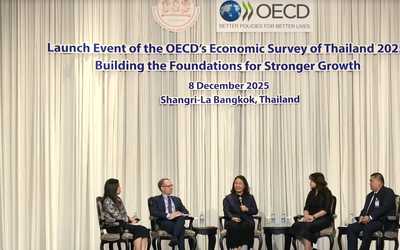Intensive and Extensive Margins of Labour Supply in Thailand: Decomposing the Pattern of Work Behaviours
Abstract
The paper highlights the important differences between the extensive margins (participation) and the intensive margins (hours-of-work) of labour supply, in the case of Thailand. We use Thailand's Labour Force Survey to explore the evolution of labour supply at both margins over the past three decades. We show that Thailand's extensive margins of labour supply follow the conventional life-cycle pattern of an inverted U-shape along the age distribution. However, for the intensive margins, occupation types and education levels play significant roles in dictating the shape of hours-of-work along the life-cycle. We employ a pseudo-cohort analysis to allow us to track the same representative age-gender sample across their life time. While we find that men supply more mean hours per capita than women, we do not find much marriage premium on the intensive margin among those who worked. Marriage premium is highly noticeable along the extensive margin. At all ages, women have smaller extensive margins. Female workforce also reduce the margins more strongly when they reach older ages than men. In our statistical exercise combining a decomposition approach with forecasting, we find that a policy targeting raising participation rates work more effective than a policy on intensive margins, in increasing the total hours-of-work of the working age population.








